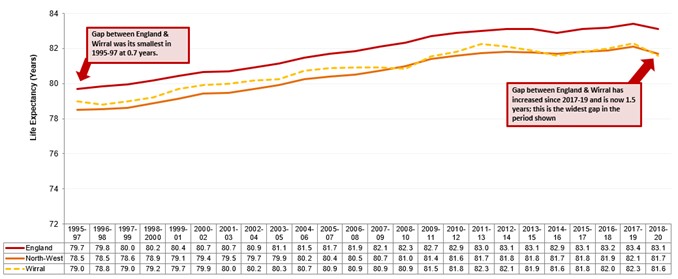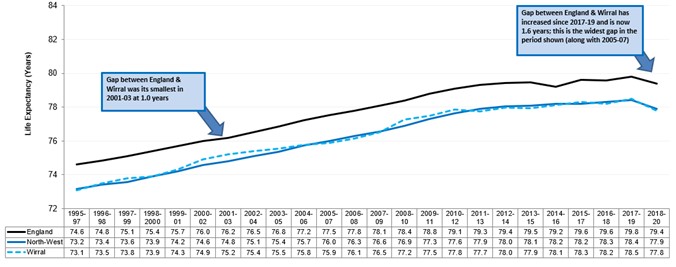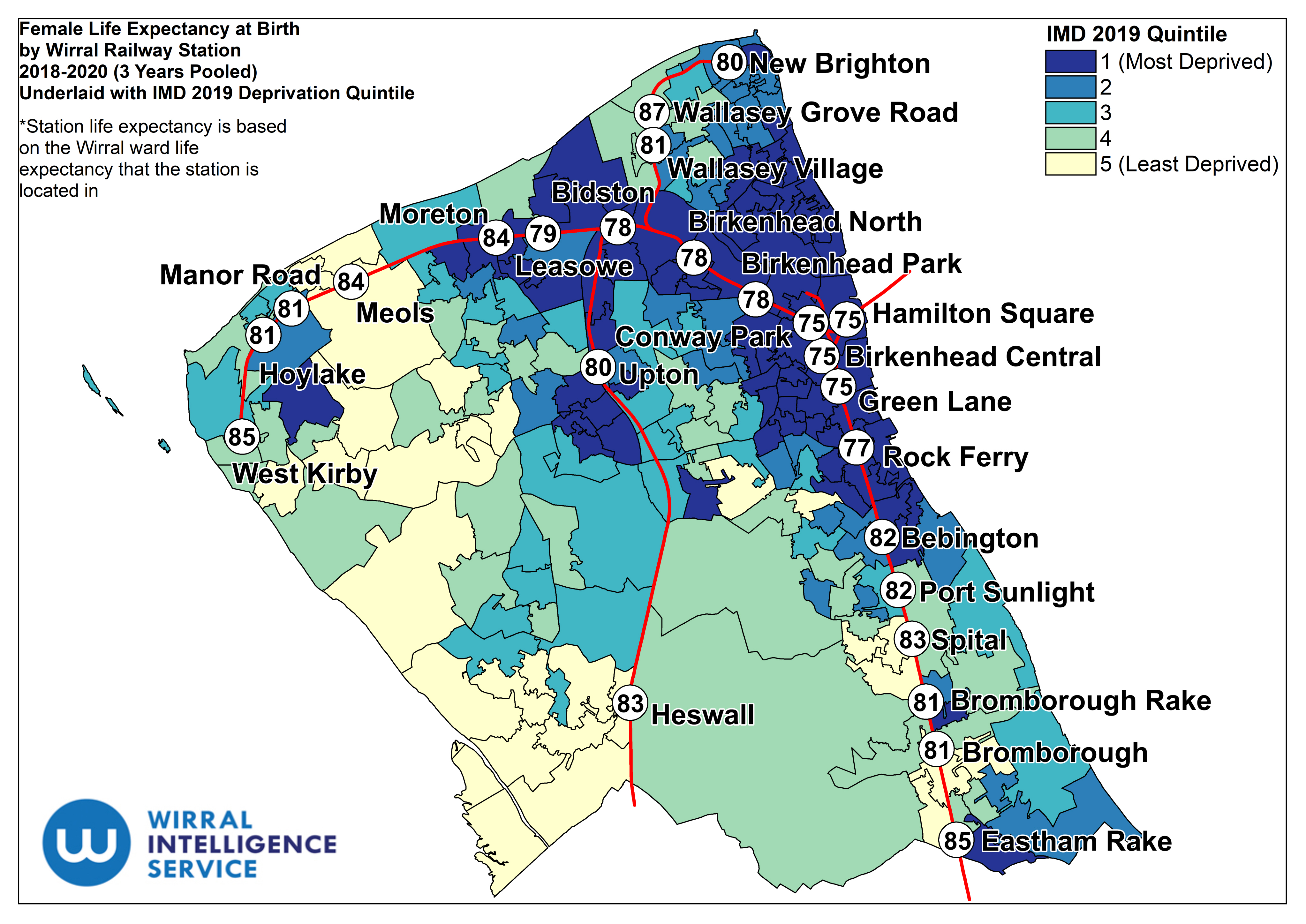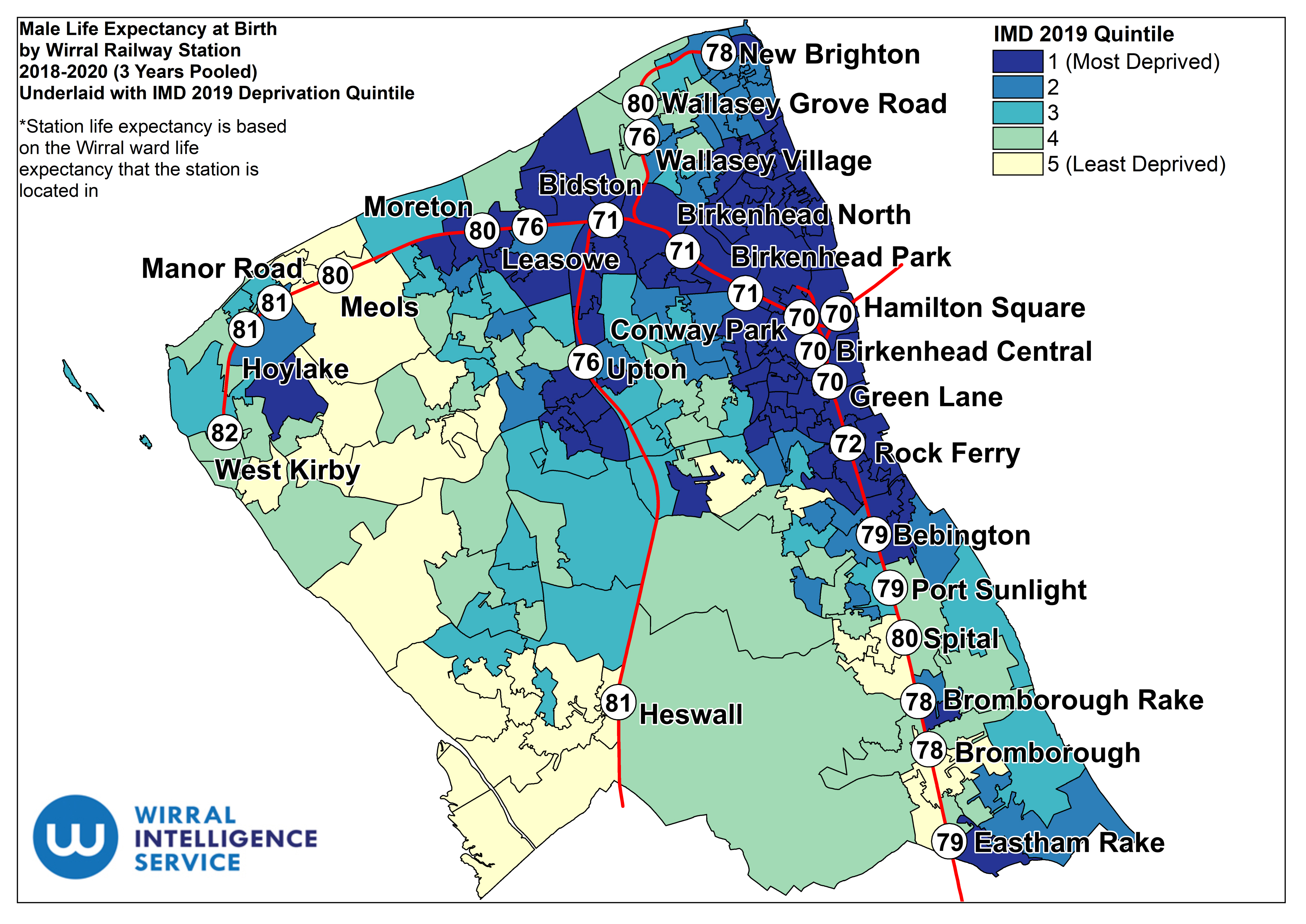Life Expectancy
Wirral Life Expectancy (2018-2020)
Overview:
Life expectancy is an important marker for the underlying health of the population. Consequently, it is calculated regularly (usually annually) and any changes are carefully monitored by Public Health teams. Life expectancy at birth in England showed dramatic increases throughout the twentieth century as health and living conditions improved. It increased from 46 for males and 50 for females in 1900, to 76 for males and 80 for females in 2000 and has continued to increase since. However, increases in life expectancy have not been uniform across all social groups and the inequality in life expectancy between those from more deprived areas and those from more affluent areas has continued to increase. In addition to life expectancy, we also monitor healthy life expectancy (HLE) or the number of years people can expect to live in ‘good’ health. Increases in HLE have not matched the gains in life expectancy, meaning that although people are living longer, their later years are spent in poorer health, creating greater demands on health and social care services.
Trend in Life Expectancy and Life Expectancy Maps (2018-20)
Use the arrows to navigate between the Life Expectancy images below:








